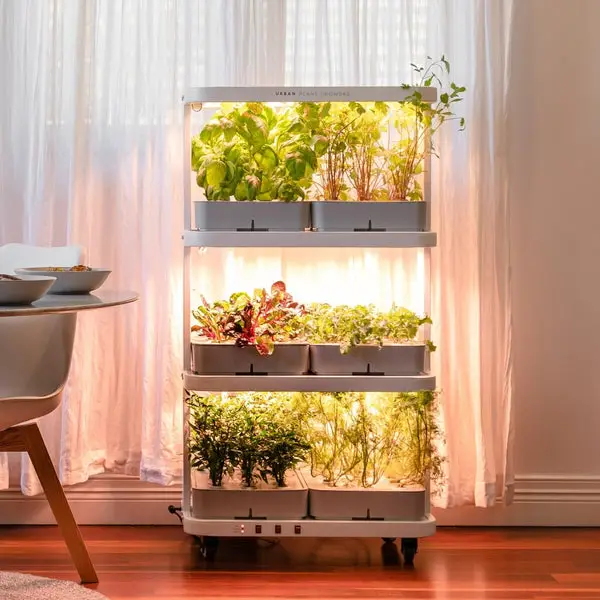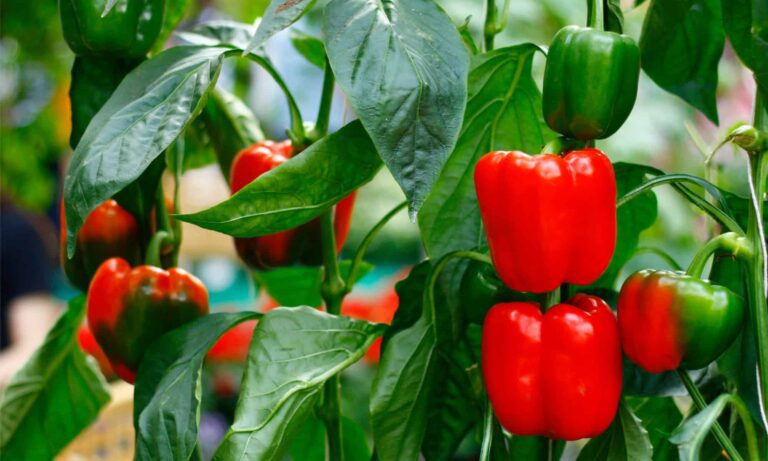Hydroponic Gardening Indoor: How to Choose the Right System and Equipment
Welcome to the world of hydroponic gardening, where the future meets your backyard! Have you ever wondered how you can cultivate lush greens and vibrant veggies right in the comfort of your own home, without the need for soil? Well, you’re in for a treat. In this guide, we’ll dive into the fascinating realm of indoor hydroponic gardening, exploring how to select the perfect system and equipment tailored to your needs.
From nutrient solutions to lighting setups, we’ll cover it all. Whether you’re a novice green thumb or a seasoned pro, get ready to embark on a journey of growth and abundance. Let’s dig in and uncover the secrets to thriving hydroponic gardens!
Table of Contents
Understanding the Basics of Hydroponic Gardening Indoor
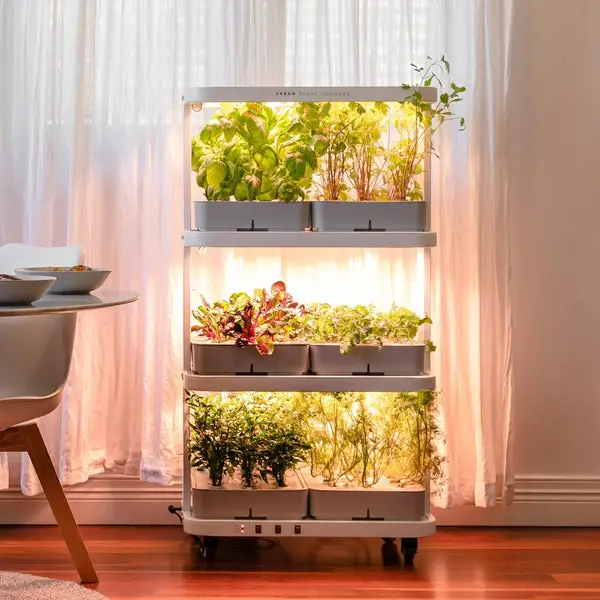
Exploring indoor hydroponic gardening:
- Modern Approach to Cultivation: Hydroponic gardening offers a contemporary and innovative method for growing plants indoors, providing a sustainable and efficient gardening solution.
- Soil-Free Growth: Unlike traditional gardening, hydroponics cultivates plants without soil, utilizing a nutrient-rich water-based solution instead.
Advantages of Indoor Hydroponic Gardening:
- Maximized Space Utilization: Hydroponic systems are adaptable to small areas, maximizing space utilization and enabling gardening even in limited spaces like apartments or small homes.
- Efficiency and Productivity: By controlling factors such as light, temperature, and nutrient levels, indoor hydroponic gardening enhances efficiency and productivity, leading to healthier plant growth and higher yields.
- Weed and Pest Control: Eliminating soil eliminates the need for dealing with weeds, pests, or soil-borne diseases, making hydroponic gardening a cleaner and more manageable option.
Indoor hydroponic gardening presents an opportunity for growers to create sustainable and productive garden spaces, regardless of available space limitations, while offering a clean and efficient alternative to traditional gardening methods.
Evaluating Your Space and Budget for an Indoor Hydroponic System
When considering setting up an indoor hydroponic system, one of the crucial factors to evaluate is your available space and budget. The amount of space you have will determine the size and scale of your system, while your budget will determine the equipment and components you can afford.
Assessing Your Space
- Measure the area where you plan to set up your hydroponic system to ensure it can accommodate the necessary equipment.
- Consider the physical dimensions and environmental conditions of the space.
- Ensure the availability of a suitable power source and access to water.
- Assess the potential for expansion if needed.
Determining Your Budget
- Assess your budget for the project, including both initial setup costs and ongoing expenses.
- Consider the costs of equipment such as grow lights, ventilation systems, nutrient solutions, and growing mediums.
- Keep in mind that higher upfront costs for some components may lead to more efficient and higher-quality growth in the long run.
- Factor in the costs of infrastructure modifications or investments required for your hydroponic setup.
- Budget for maintenance, upkeep, and potential expansion of the system.
By thoroughly evaluating your space and budget, you can make informed decisions about the size and scale of your indoor hydroponic system, ensuring that it aligns with your specific needs and resources. This step is essential to set a solid foundation for a successful and sustainable indoor gardening endeavor.
Determining Your Gardening Goals and Plant Selection for Indoor Hydroponics
When embarking on an indoor hydroponic gardening journey, it is crucial to define your gardening goals and carefully select the right plants for your setup. Identifying your goals will help you tailor your hydroponic system to meet your specific needs and ensure a successful and rewarding experience.

Setting Your Indoor Hydroponic Garden Goals:
- Define Your Culinary Vision: Determine if you’re aiming for fresh herbs, leafy greens, exotic flowers, or year-round vegetable production to tailor your hydroponic setup accordingly.
- Informed Decision-Making: Understanding your desired outcome guides decisions from system selection to lighting and nutrient solutions.
Choosing Suitable Plants:
- Consider Plant Characteristics: Evaluate factors like size, growth rate, nutrient needs, and temperature preferences to select plants suited for indoor hydroponics.
- Popular Choices: Common hydroponic plants include lettuce, kale, basil, tomatoes, and strawberries, but explore options like microgreens or dwarf fruit trees for variety.
Building a Thriving Garden:
- Foundation for Success: By aligning your gardening goals and plant selection, you establish the groundwork for a productive indoor hydroponic garden.
- Exploring Hydroponic Systems: Next, explore various hydroponic systems that match your goals and available space to create a flourishing indoor garden.
Stay tuned for our next section where we delve into the exciting world of hydroponic systems for indoor gardening.
Exploring Different Types of Hydroponic Systems for Indoor Gardening
Hydroponic systems offer a versatile and efficient way to grow plants indoors, free from soil limitations. When exploring different types of hydroponic systems for indoor gardening, it is essential to consider factors such as space availability, plant types, and personal preferences.
- Nutrient Film Technique (NFT):
- Description: Nutrient-rich water flows over plant roots in a thin film.
- Ideal for: Small spaces due to low vertical height requirements.
- Eco-Friendly: Recirculating system conserves water and nutrients.
- Deep Water Culture (DWC):
- Description: Plant roots are suspended in a nutrient solution with oxygen provided by an air pump.
- Suitable for: Beginners due to simplicity in setup and maintenance.
- Benefits: Promotes faster growth and enhanced nutrient absorption.
- Other Hydroponic Systems:
- Ebb and Flow: Nutrient solution floods plant roots periodically, allowing oxygenation in between.
- Aeroponic: Plant roots are suspended in air, with nutrient solution delivered via misting.
- Drip: Nutrient solution is dripped onto plant roots via tubing or drippers.
By exploring the different types of hydroponic systems, one can find the perfect fit for their indoor gardening needs.
The followin table tells about different Hydropnic system:
| Hydroponic System | Description | Advantages | Considerations |
| Nutrient Film Technique (NFT) | Thin film of nutrient-rich water flows over plant roots, providing nutrients. | Suitable for small spaces. | Requires constant monitoring to prevent clogs or interruptions. |
| Deep Water Culture (DWC) | Plant roots are suspended in a nutrient solution with an air pump providing oxygen. | Simple setup and maintenance. | Requires proper aeration for healthy root development. |
| Ebb and Flow System | Nutrient solution floods the grow tray and then drains back into the reservoir. | Versatile and suitable for various plant types. | Potential for uneven nutrient distribution. |
| Aeroponic System | Plant roots are misted with a nutrient solution, allowing for high oxygen availability. | Efficient nutrient absorption and rapid plant growth. | Prone to clogging, requiring regular maintenance. |
| Drip System | Nutrient solution is dripped onto the base of each plant through a network of tubes. | Precise control over nutrient delivery. | Requires careful monitoring to prevent over- or under-watering. |
As an avid hydroponic enthusiast, I recently delved into “Hydroponic Mastery: Growing Vegetables with Nutrient Film Technique.” This eBook proved to be a game-changer in my indoor gardening journey.
Pros:
The guide is exceptionally comprehensive, covering every aspect of the Nutrient Film Technique (NFT) with clarity and depth. From setup to maintenance, it offers practical advice that even a novice like me found easy to follow. The step-by-step instructions, accompanied by illustrations, made the learning process smooth and enjoyable.
I appreciated the emphasis on maximizing crop yields while ensuring optimal plant health. The book provided invaluable insights into nutrient management and system maintenance, helping me achieve impressive results with my hydroponic setup.
Cons:
While the focus on NFT was beneficial, I wished there was more exploration of other hydroponic techniques. Additionally, as someone who prefers physical books, the eBook format was a minor inconvenience.
In conclusion, “Hydroponic Mastery” is a must-have resource for anyone venturing into hydroponic gardening, particularly those interested in NFT. It’s an investment that pays off manifold in the form of lush, thriving crops and a deeper understanding of hydroponic principles.
- Comprehensive guide: Offers in-depth insights into the Nutrient Film Technique (NFT) for hydroponic vegetable cultivation.
- Practical advice: Provides practical tips and techniques for maximizing crop yields using NFT systems.
- Easy-to-follow instructions: Step-by-step instructions make it accessible even for beginners in hydroponic gardening.
- Valuable resource: Contains valuable information on nutrient management, plant health, and system maintenance.
- Enhanced learning: Includes illustrations and diagrams to aid understanding and implementation of NFT principles.
- Limited focus: Primarily focuses on NFT, may not cover other hydroponic techniques extensively.
- Digital format: Some readers may prefer a physical book over an eBook format.
- Technical content: Advanced concepts may require additional research or prior knowledge in hydroponics.
- Lack of customization: Strategies provided may not suit every individual’s specific needs or growing conditions.
- Potential for information overload: Extensive information may overwhelm beginners without prior experience in hydroponics.
Considering the Size and Scale of Your Indoor Hydroponic Setup
When considering the size and scale of your indoor hydroponic setup, there are several factors to take into account.
- Available physical space: Measure the area in your home or greenhouse where you plan to set up the system. Account for both horizontal and vertical space.
- Plant height requirements: Some plants, like tomatoes, may need more vertical space to accommodate their growth. Choose a setup that provides sufficient headroom for your selected plants.
- Plant type and size: Leafy greens and herbs can thrive in smaller systems, while larger plants like tomatoes and cucumbers require more space. Select plants that are well-suited for hydroponics.
- Number of plants: The more plants you intend to grow, the larger your system will need to be. Plan for adequate space to accommodate your desired plant count.
- Growing method: Vertical hydroponic systems allow you to grow more plants in a smaller footprint, while substrate growing systems may require more horizontal space.
- Budget: The size of your system will impact the initial investment and ongoing operational costs. Consider your budget when determining the appropriate scale.
By carefully considering these factors, you can select a hydroponic system that fits your available space, accommodates your desired plants, and aligns with your gardening goals and budget.
Assessing the Nutrient Delivery System Options for Indoor Hydroponics
When it comes to indoor hydroponic gardening, one of the key factors for success lies in providing the plants with the right balance of nutrients. Unlike traditional soil-based gardening, where nutrients are naturally present in the soil, hydroponic systems require a nutrient delivery system to ensure that plants receive the necessary elements for healthy growth.

- Nutrient Film Technique (NFT):
- Description: Thin film of nutrient-rich water flows over plant roots in a shallow channel.
- Advantages: Efficient nutrient delivery directly to roots; suitable for fast-growing leafy greens and herbs.
- Deep Water Culture (DWC):
- Description: Plant roots are submerged in a nutrient solution.
- Advantages: Provides ample oxygen to roots; best for larger plants requiring more water and nutrients.
- Drip Irrigation:
- Description: Drip line delivers a steady flow of nutrient solution to the root zone of each plant.
- Advantages: Precise control over nutrient delivery; ideal for larger-scale indoor gardens.
As hydroponic gardening continues to gain popularity, new and innovative nutrient delivery systems are being developed. From aeroponics to ebb and flow systems, there is no shortage of choices for indoor gardeners to explore.
Considering factors such as the type of plants you want to grow, your space limitations, and your budget, it’s important to research and evaluate the different nutrient delivery systems available. By selecting the right system for your specific needs, you can create an optimal growing environment for your indoor hydroponic garden and maximize the potential of your plants.
Selecting the Right Lighting for Optimal Indoor Hydroponic Growth
When it comes to indoor hydroponic gardening, selecting the right lighting is crucial for achieving optimal growth and plant development. Light plays a vital role in photosynthesis, the process by which plants convert light energy into chemical energy, fueling their growth. In an indoor setting, where natural sunlight may be limited or inconsistent, providing the appropriate artificial lighting becomes essential.
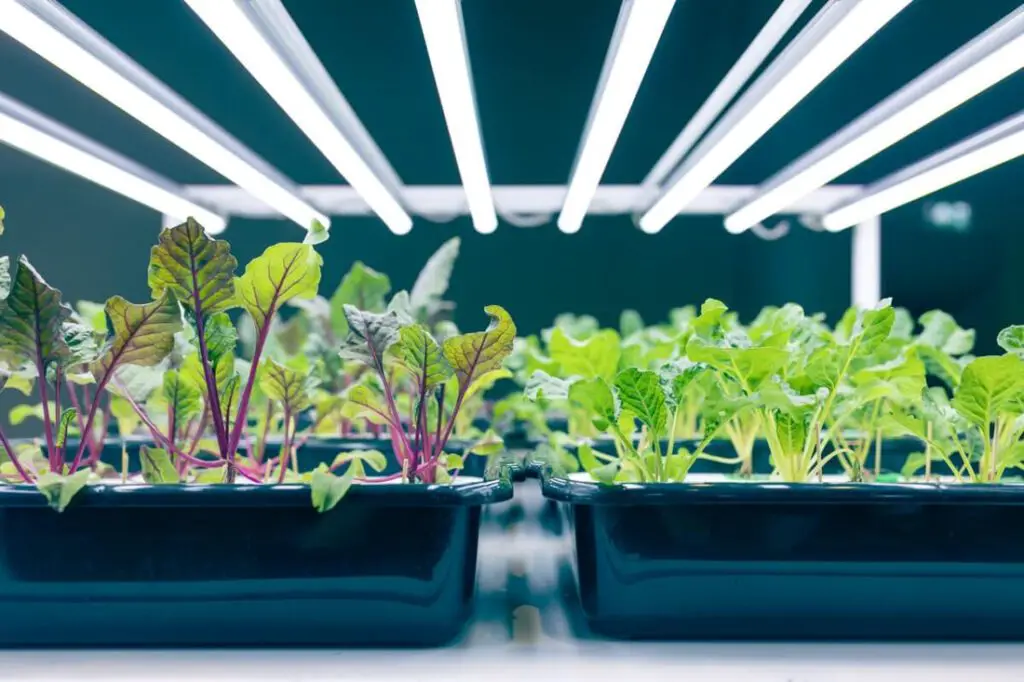
- Consider Light Intensity, Spectrum, and Duration:
- Importance: Vital factors influencing healthy plant growth.
- Factors: Intensity, color spectrum, and duration of light exposure.
- Traditional Options: High-Intensity Discharge (HID) Lights:
- Types: Metal halide (MH) and high-pressure sodium (HPS) lamps.
- Advantages: Known for intense light production.
- Energy-Efficient Alternative: Light-Emitting Diodes (LEDs):
- Advancements: More energy-efficient option compared to HID lights.
- Benefits: Provides required light spectrum while consuming less energy.
- Stay Updated on Lighting Innovations:
- Market Evolution: Continual advancements introduce new options.
- Comparison: Regularly assess features and benefits to choose the most suitable lighting option for your hydroponic setup.
By considering factors like light intensity, spectrum, and energy efficiency, you can select the ideal lighting solution to promote healthy growth in your indoor hydroponic garden. Stay informed about the latest innovations to make well-informed decisions for your plants’ well-being.
A Review of FECiDA’s Dimmable Full Spectrum Grow Light
As an avid indoor gardener, I recently invested in FECiDA’s Dimmable Full Spectrum Grow Light to enhance the growth of my indoor plants, and the results have been impressive.
Firstly, the dimmable feature allows me to tailor the light intensity according to the specific needs of my plants at different growth stages. Whether it’s promoting seedling growth or encouraging flowering, this flexibility ensures optimal conditions for each phase of plant development.
The full spectrum light emitted by this grow light mimics natural sunlight, providing my plants with the complete range of wavelengths they need for healthy growth. From vibrant greens to robust flowering, my plants are thriving under this comprehensive lighting solution.
I appreciate the energy efficiency of FECiDA’s grow light, as it minimizes electricity consumption while still delivering high-intensity light output. This not only saves on energy costs but also reduces the environmental footprint of my indoor gardening setup.
In terms of durability, this grow light is built to last. Its sturdy construction ensures long-lasting performance, giving me peace of mind knowing that I can rely on it for consistent results season after season.
While the initial investment may be higher than some other grow lights on the market, the quality and performance of FECiDA’s Dimmable Full Spectrum Grow Light justify the cost. It’s a worthwhile investment for any indoor gardener looking to maximize the growth potential of their plants.
Overall, I highly recommend FECiDA’s Dimmable Full Spectrum Grow Light to fellow indoor gardeners seeking a reliable and efficient lighting solution for their plants. With its dimmable feature, full spectrum light, energy efficiency, and durability, it’s truly a game-changer for indoor gardening enthusiasts like myself.
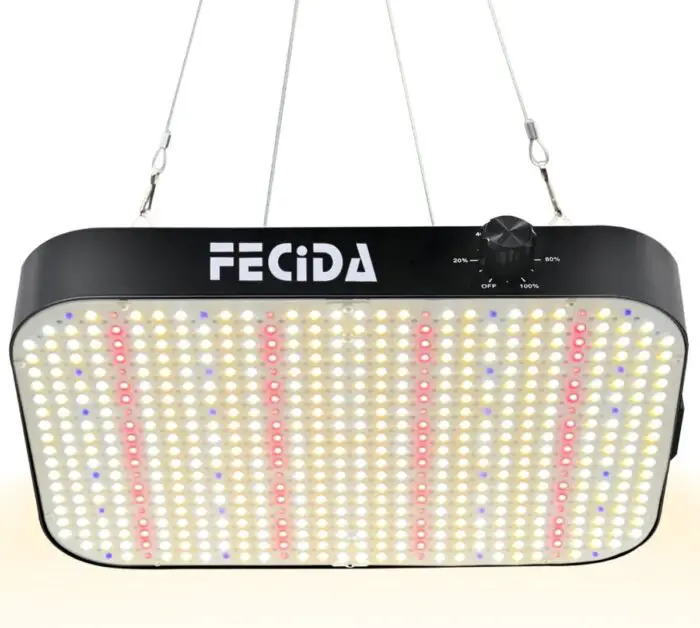
✅ Dimmable feature allows for precise control over light intensity.
✅ Full spectrum ensures optimal light conditions for all growth stages.
✅ Energy-efficient design minimizes electricity consumption.
✅ Durable construction for long-lasting performance.
❌ Higher initial investment compared to standard grow lights.
❌ Dimmable feature may not be necessary for all users.
❌ Bulky design may take up more space in grow areas.
❌ Limited coverage area compared to larger grow light systems.
Choosing the Appropriate Growing Medium for Your Indoor Hydroponic Garden
When it comes to indoor hydroponic gardening, choosing the appropriate growing medium is essential for the success of your plants. The growing medium serves as a support structure for the roots, provides necessary oxygen and nutrients, and plays a crucial role in water retention. There are various types of growing mediums available, each with its own unique properties and suitability for specific plant types.
- Rockwool is a popular choice as it has excellent water retention while allowing for proper drainage and oxygen supply to the roots.
- Coco coir, made from coconut husks, offers a balanced water-to-air ratio, preventing waterlogging while providing sufficient moisture. Its fibrous structure promotes root growth and nutrient absorption.
- Perlite, vermiculite, and clay pebbles are other growing mediums with their own advantages depending on specific needs and preferences.
- The choice of growing medium should be based on factors like the plant’s nutrient requirements, water retention capabilities, and the gardener’s goals.
- It is crucial to consider the specific needs of the plants and ensure the chosen medium provides optimal conditions for growth and development.
- Carefully selecting the appropriate growing medium creates an ideal environment for indoor hydroponic gardens and leads to successful, thriving crops.
Ensuring Proper Ventilation and Air Circulation in Your Indoor Hydroponic Setup
Proper ventilation and air circulation are crucial factors to consider when setting up your indoor hydroponic garden. Without adequate airflow, your plants can suffer from a range of problems such as excessive humidity, stagnant air, and the build-up of harmful gases. To ensure optimal conditions for your plants’ growth and health, here are some key considerations for ventilation and air circulation in your indoor hydroponic setup.
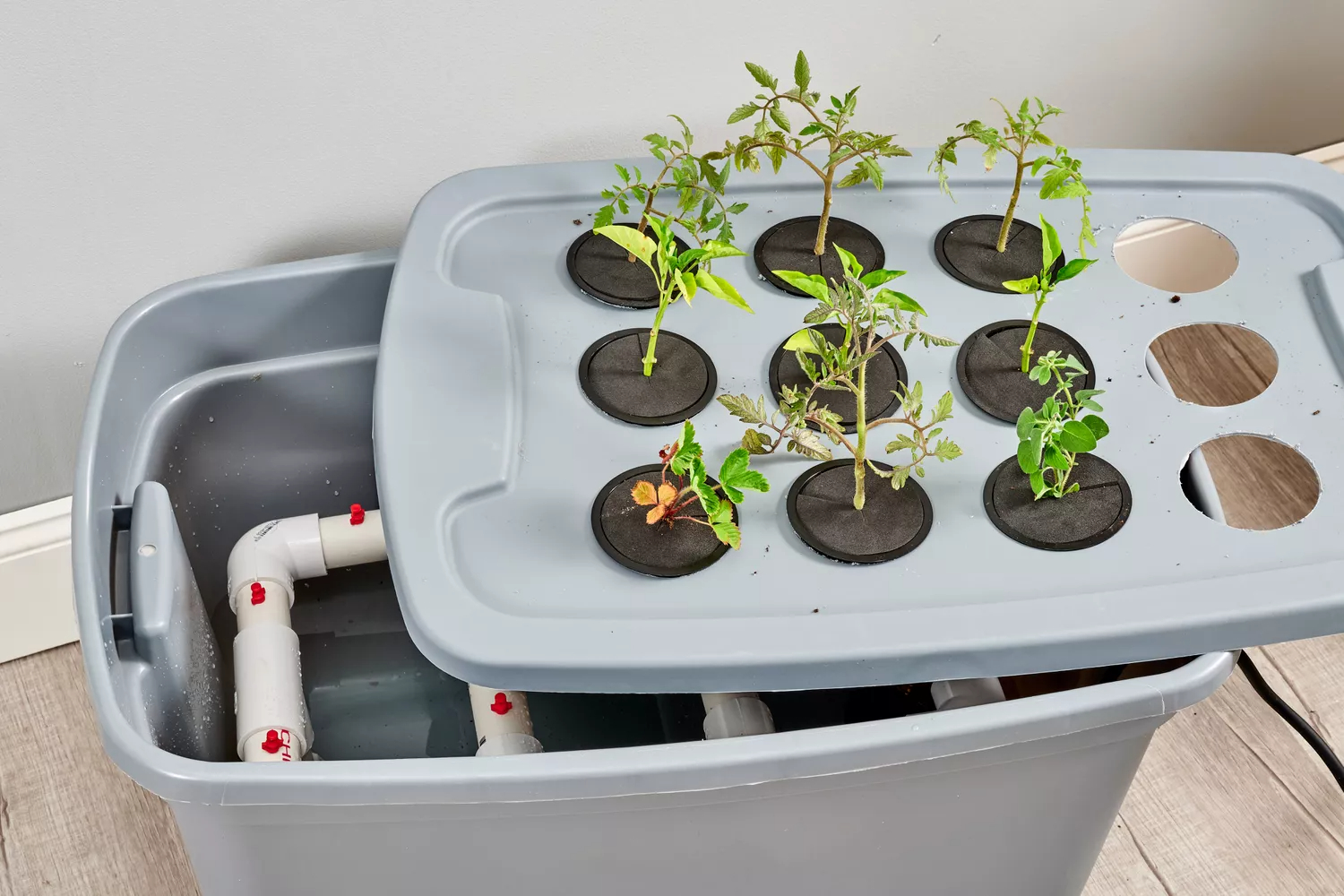
Significance: Crucial for healthy plant growth and preventing CO2 accumulation.
Solution: Install exhaust fans to remove stale air and bring in fresh air from outside.
Consideration: Size and number depend on garden size and plant quantity.
Enhancement: Use carbon filters to eliminate unwanted odors.
Purpose: Circulate air and prevent stagnant conditions.
Benefits: Mimic outdoor conditions, strengthen plant stems, and reduce disease risk.
Positioning: Strategically place fans for even air distribution throughout the garden.
Importance: Regular cleaning ensures optimal fan performance.
Prevention: Prevents dust and debris buildup, which can hinder airflow.
Remember to regularly clean and maintain your fans to prevent the accumulation of dust and debris, which can hinder their performance.
Understanding the Importance of pH and Nutrient Monitoring in Indoor Hydroponics
Maintaining the proper pH and nutrient levels is crucial for the success of your indoor hydroponic garden. In a hydroponic system, plants rely on the nutrient solution provided directly to their roots, making it essential to monitor and adjust these levels regularly.
- pH directly affects nutrient availability for plants. Each plant has an optimal pH range for thriving growth.
- Monitoring pH is done using pH meters or test kits to measure the acidity or alkalinity of the nutrient solution.
- pH adjustments are made by adding pH up or pH down solutions to bring the levels within the optimal range for the specific plants.
- Nutrient monitoring is vital for maintaining a healthy hydroponic system, as different plants have varying nutrient requirements at different growth stages.
- Nutrient deficiencies or excesses can lead to stunted growth, nutrient lockout, and other detrimental effects.
- Regular testing of the nutrient solution and analyzing macro and micronutrient levels ensures plants receive the necessary elements for optimal development.
- Effective pH and nutrient monitoring are crucial for successful indoor hydroponics, as they provide plants with an environment that maximizes their growth potential.
In the next section, we will explore automation and control systems that can simplify and streamline this process, allowing you to focus on the rewarding aspects of your indoor hydroponic garden.
Exploring Automation and Control Systems for Efficient Indoor Hydroponic Gardening
Automation and control systems play a crucial role in maximizing efficiency and productivity in indoor hydroponic gardening. With the advancement of technology, these systems have become increasingly sophisticated, offering gardeners the ability to monitor and control various parameters of their hydroponic setup with ease.
Researching and Comparing Equipment Brands and Suppliers for Indoor Hydroponics.
When it comes to indoor hydroponic gardening, the success of your plants heavily depends on the equipment and supplies you choose. Researching and comparing different brands and suppliers is crucial to ensure that you invest in high-quality products that meet your specific needs.
- Prioritize Reputable Brands:
- Key Consideration: Choose brands with a strong reputation and history in the hydroponic industry.
- Benefits: Established brands offer reliability, quality, and a diverse product range.
- Research and Compare:
- Price and Features: Compare prices and features from various suppliers to ensure competitive pricing and quality.
- Availability of Spare Parts: Consider suppliers offering readily available spare parts for easy maintenance.
- Customer Support Services: Evaluate customer support options for assistance and guidance when needed.
- Informed Decision-Making:
- Thorough Research: Gather information from multiple sources to make well-informed decisions.
- Set Yourself Up for Success: Choosing reliable equipment sets the foundation for a successful indoor hydroponic garden experience.
By prioritizing reputable brands, comparing prices and features, and considering factors like spare parts availability and customer support services, you can equip your indoor hydroponic garden with reliable and high-quality equipment, ensuring optimal performance and success in your gardening endeavors.
Check out the video for more information:
FAQ
How do I choose the right equipment brand for my indoor hydroponic system?
When selecting an equipment brand for your indoor hydroponic system, it is important to consider factors such as reputation, product quality, customer reviews, and customer support. Research different brands, read reviews, and compare features and prices to make an informed decision.
What are some reputable suppliers of indoor hydroponic equipment?
There are several reputable suppliers of indoor hydroponic equipment, such as General Hydroponics, Hydrofarm, Advanced Nutrients, and Botanicare. However, it is always recommended to do thorough research and read reviews before choosing a supplier.
Are there any specific brands or suppliers that specialize in a certain type of hydroponic system?
Yes, some brands and suppliers specialize in specific types of hydroponic systems. For example, Aerogarden is known for its compact and easy-to-use countertop systems, while companies like Current Culture and SuperCloset offer complete hydroponic systems for larger-scale setups. It is important to research and compare different brands to find the one that suits your specific needs.
What factors should I consider when comparing equipment brands and suppliers?
When comparing equipment brands and suppliers for indoor hydroponics, consider factors such as product quality, warranty, customer support, availability of spare parts, pricing, and compatibility with your desired hydroponic system. Additionally, reading customer reviews and seeking recommendations from experienced hydroponic growers can also be helpful.
Can I purchase indoor hydroponic equipment from local stores or is it better to buy online?
Indoor hydroponic equipment is available both in local stores and online. While local stores may offer the advantage of immediate access and the ability to physically inspect the equipment, online suppliers often have a wider selection and competitive prices. Consider your location, availability of local stores, and personal preference when deciding where to purchase your equipment.
What are some common mistakes to avoid when researching equipment brands and suppliers?
Some common mistakes to avoid when researching equipment brands and suppliers for indoor hydroponics include solely relying on the pricing, overlooking customer reviews, not considering the specific needs of your hydroponic system, and not verifying the credibility and reputation of the brand or supplier. It is crucial to make an informed decision based on thorough research and consideration of all relevant factors.
Are there any specific certifications or standards I should look for in equipment brands or suppliers?
While there are no specific certifications or standards for indoor hydroponic equipment brands or suppliers, you can look for brands that adhere to industry best practices, have a reputation for quality, and offer warranties on their products. Additionally, some suppliers may offer guarantees or certifications for specific components or systems.
Can I get assistance or guidance from equipment brands or suppliers in setting up my indoor hydroponic system?
Yes, many equipment brands and suppliers provide assistance and guidance to customers in setting up their indoor hydroponic systems. This can include instructional videos, user manuals, customer support helplines, and even consultations with experienced growers. It is beneficial to choose a brand or supplier that offers such support to ensure a smooth and successful setup process.
Can I return or exchange equipment if it doesn’t meet my expectations?
The return or exchange policies may vary depending on the brand or supplier. Before making a purchase, it is important to review their return or exchange policy to understand the terms and conditions. Some brands or suppliers may offer a money-back guarantee or warranty, while others may have stricter policies. It is advisable to clarify any doubts regarding returns or exchanges before making a purchase.
Are there any specific considerations for international buyers when researching equipment brands and suppliers?
International buyers should consider factors such as shipping costs, import regulations, customs duties, and voltage compatibility when researching equipment brands and suppliers. It is important to check if the brand or supplier offers international shipping, and if they have experience dealing with international customers. Additionally, researching local suppliers or distributors in your country can also be beneficial for international buyers.

Studied Agricultural Engineering-Plant Protection at University of California, Davis.
Head of Content writing team at Southelmontehydroponics.com

